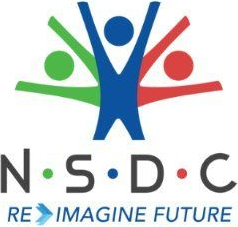No-Code or Coding Through ‘Muddling Along’ – A Debate Rages

No-code platforms promise lightning-fast development, but they’re silently starving the next generation of crucial skills. As seasoned engineers exit and juniors skip the “muddle,” the industry risks a foundational knowledge famine. Can we democratize coding without destroying the craft that builds it?
- “Muddling Through” Matters: Junior developers need the struggle of writing, debugging, and refining code themselves to build deep understanding and problem-solving skills – shortcuts create hollow expertise.
- AI ≠ Autopilot: Treating AI as just a code generator backfires; it excels as a partner for design, planning, and review, but fundamentals (architecture, testing) remain irreplaceable human work.
- Growth ≠ Maturity: Rushing citizen development (21% market growth to $30B by 2028) without investing in mentorship and core engineering principles risks long-term productivity and innovation collapse.
As no-code platforms gain wider acceptance across organizations attracted by immediate efficiency gains, a major challenge is emerging – the absence of foundational knowledge in future ‘developers.’ Analysts are apprehensive of hollowing out of senior software development talent in organizations across the world, as retrenchment, retirement and, natural attrition shrink the global population of experienced software development talent, who have learnt the basics by the valuable learning cycle of ‘muddling’ through mistakes and correcting those.
Senior practitioners don’t just appear — they’re created, and that process of creation takes work and time, and may not be the most immediately “efficient” thing to do. Efficiency in the immediate moment just isn’t the most important thing — it can’t be, if we want the future to be bright.
According to the Forrester low code platforms report, the low-code market is expected to experience significant growth in the next five years, driven by several important factors. After analyzing relevant data from over 100 vendors, Forrester estimates that the combined low-code and digital process automation (DPA) market reached $13.2 billion by the end of 2023. This represents a growth rate of roughly 21% since 2019. What drove this growth? The institutionalization of low-code in IT. Based on our most recent survey data, 87% of enterprise developers use low-code development platforms for at least some of their development work.
The analyst firm expects this growth to continue through 2028. Why? Citizen development. The democratization of development to workers outside of IT shows no signs of slowing down — and as citizen developer strategies mature, we believe that this relatively untapped use case will sustain a 21% growth rate for the next five years, growing to approximately $30 billion in 2028. However, the no-code honeymoon seems to be showing the first signs of strains.
Using an AI coding assistant felt magical at first, writes Devin Dickerson, a principal analyst at Forrester. While Devin felt was amazed as it generated lines of code in seconds giving him a sense of invincibility, but as the projects became more complex, things became tougher, eventually leading to a decline in productivity. The mistake, he admits, was in treating AI solely as a code generator, “forgetting the importance of software development principles.” However, once he began using it as a partner for the entire process—creating design documents and sprint plans—his workflow improved significantly.
In the pre-AI era, a junior engineer would start working on a ticket, and make some mistakes, introduce a bug or two, and they’d basically be armed with StackOverflow and the docs, plus peers to collaborate with for help, to figure out how to get it right. Once they muddled through and got the code working, they’d make a PR and get feedback from more experienced peers, who would offer recommendations and corrections. Once those corrections were made, a PR could be approved and merged.
According to data scientist and author, Stephaine Kirmar; “this “muddling through” part of this process is actually pedagogically and professionally quite important. Once you’ve passed through the academic preparation for the software engineering role, the practical preparation is what you need to develop the capabilities to grow.”
Stephanie, a strong believer in the idea that making mistakes and fixing them is a tremendously valuable way to learn. It is vital, she argues, for a junior developer to through the rigor of working hard on writing the code, fixed their own bugs, writing the tests and docs, and going through peer review. Only then they would know that bit of code better than any other person around. “That process is the productive cognitive labor that brings them a step closer to being an engineer who can work independently, and take on more senior responsibilities successfully,” she concludes.
Forrester’s Devin shares a similar experience as he realized that sometimes a fresh start is necessary, with sound design principles from the beginning. “The experience taught me that while AI can accelerate development, the fundamentals of software engineering—like clean architecture, careful design, and thorough testing—are crucial. Embrace AI’s power, but remember that speed is meaningless without direction. The goal is to build better software faster, not just to write code quickly,” he writes. This is a lesson all junior software developers today, feeling lost as no-code platforms threaten jobs, that there will never be any replacement of those with the foundational knowledge garnered through the process of ‘muddling through.”


